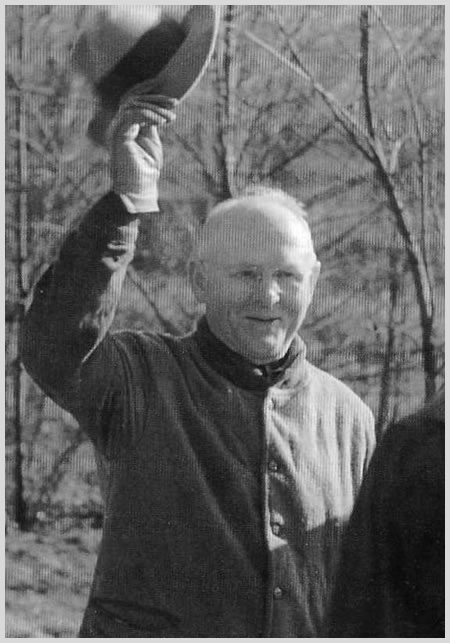OUR FOUNDER
A Brief Biography
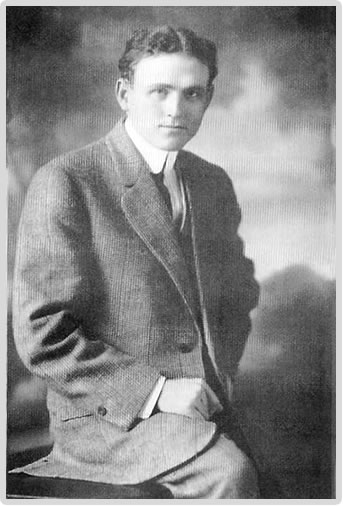
MAX McGRAW
Born just months after Thomas Edison commenced operation of the first commercial central generating station, Pearl Street, Max McGraw would grow up endowed with those same entrepreneurial characteristics that Edison epitomized.
Edison and McGraw had similar traits and shared many characteristics. Each was extremely hard working and had a fierce and deep belief in free enterprise, a love of our nation and the opportunities it offered.
Max McGraw was a giver, not a taker. He will be remembered with gratitude for his significant contributions to many causes, in particular conservation. He became a leader in the conservation movement, not only because of his concern for wildlife, but for all of his country’s natural resources.
To many, he will ever symbolize the dignity and strength of the individual in a free enterprise society. His entire life is a living testimonial for free enterprise. He demonstrated his regard for American democracy openly and for all to see.
To everyone who knew him, Max McGraw will be remembered as a very special kind of person, one who moved quietly and confidently through this world getting worthwhile things done. Reserved and unassuming, he had a wonderfully subtle wit. Because he was so soft-spoken, many of his wise aphorisms are treasures of only a few. Perhaps his mildness was an indication that he did not particularly wish to be noticed. He was a quietly great individual who simply wanted to be himself.
He was so soft-spoken and modest without realizing it that in business matters some occasionally imagined him a victim. Max McGraw always corrected this misbelieve …gently, but with finality. He could not abide poor workmanship, superficial planning or cloudy thinking. Offenses against his business ethics or personal code of honor would bring out his innate toughness of character, one of the qualities which made him the fine executive and leader that he was. For in every sense of the word he was a leader, not a ruler. He deplored any operation that was a one-man show. His method of operation was developing qualified people and delegating power… instead of collecting it. If there is any single secret to his success, that secret was his ability to find the right man… then bring out the best in him. Max McGraw possessed the rare talent to balance and blend delicate intangibles of character, then mesh group effort for accomplishment.
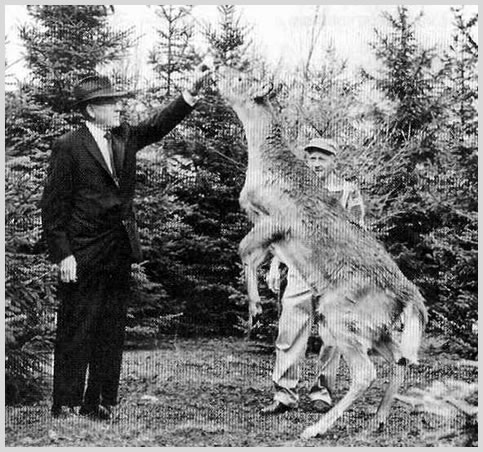
Max McGraw, who loved animals, was a staunch and dedicated conservationist.
From Newsboy to Corporate Chairman
Max McGraw, who was born in Clear Lake, Iowa, on February 1, 1883, retained those small town characteristics until his passing on October 26, 1964, at the age of 81 while on a hunting trip in Utah. He was a warm and generous human being who loved everyone and was loved by all who knew him.
Just as Thomas Edison worked as a newsboy as a young teenager, so too did Max McGraw begin his business career. With $500 saved as a newspaper delivery boy, he began as an electrical contractor in 1900 at the age of 17, establishing McGraw Electric Company, the predecessor of McGraw-Edison Company.
From that modest beginning in mid-America, Max McGraw was to create two of this country’s largest and most successful corporations, McGraw-Edison Company and Centel Corporation.
Throughout Max McGraw’s life story is the pattern of striving toward a goal. There is in the climax the attainment of success stemming from his vision, ingenuity and plain hard work.
At the time of his death, Max McGraw, age 81, was still vitally active and leading the affairs of the two great corporate enterprises he founded and built. He was chairman of the executive committee of McGraw-Edison Company and chairman of the board of a predecessor company of Centel Corporation. Through this corporate pioneering and through several not-for-profit enterprises he started, Max McGraw lives on.
Centel Corporation became one of the nation’s leading telecommunications companies with telephone, cable television and electric power operations in a number of states. Centel was acquired by Sprint Corporation in 1993.
By 1978, McGraw-Edison Company, a manufacturer and supplier of electrical and mechanical products, had grown into a diverse business with sales in excess of $1 billion. McGraw-Edison sold products with such well-known brand names as Speed Queen, Toastmaster, Buss, Ingraham, Halo and Modern Maid, among others.
In 1979, McGraw-Edison more than doubled its size with the acquisition of Studebaker-Worthington Corporation. Studebaker-Worthington, with sales in excess of $1.3 billion, formed from the combination of Worthington Pump Works, founded by Henry R. Worthington, inventor of the direct acting steam pump, and Studebaker Corporation, the businesses developed by Clement and Henry Studebaker. Well known brand names acquired by this transaction were Worthington, Wagner, Onan, Campbell, Clarke and Gravely, among others.
Prior to acquisition by Houston, Texas based Cooper Industries in 1985, McGraw-Edison and its affiliates employed 21,000 people in 118 manufacturing and service facilities in the United States and abroad.
Max Became Interested in Electricity at an Early Age
There was little unusual in Max McGraw’s early years. His childhood in Iowa was filled-with typical happy memories of friends and family. What made Max McGraw stand out from his childhood friends was his drive and his fascination with electricity. His interest in electricity started with simple boyhood tinkering… dissecting electric motors and telephones to see what made them tick… and grew rapidly into serious study. He studied every book on the subject he could lay his hands on. One text he used, a 550 page leather bound book, The New Catechism of Electricity – A Practical Treatise printed in 1888 was found among his effects shortly after his death. The title page bore the name Max McGraw, 1512 Jackson Street, Sioux City, Iowa, and the date 1899 was in his own handwriting. At the age of 16, Max McGraw had obtained the most current information available to prepare for a career in electricity, which he launched the next year. At every opportunity, young Max McGraw visited the local electric light and power plants and telephone companies to study the networks of wires and made friends with technicians. While attending high school, he enrolled in an electrical-engineering correspondence course and spent most of his evenings in serious study. He would work on his assignments until late at night even though he had to get up at an early hour to carry newspapers.
He encouraged 14 of his closest friends to learn the Morse code and built a home-to-home telegraph circuit. The wires, hooked to poles, barns, fences and everything else that would support a wire, virtually hummed with urgent messages. One of their favorite games was train dispatcher. These youthful dispatchers probably sent more trains on their way than have ever passed through Grand Central Station.

Today’s newsboys ride bicycles – or drive automobiles. However, in 1896 young Max McGraw rode a horse to cover his seven-mile paper route twice daily. With 13-year-old Max (seated on horse) are his friends Charley Finley, Roy Bartel and Ross Brown. Ross Brown later became the first secretary of McGraw Electric Company.
Industrious Max Earned His Keep
In adition to his intense interest in electricity young Max McGraw had many responsibilities. Not the least of these was his morning and evening paper routes, which he bagan when he was just 11 years old. For more than six years he got up at 3:30 every morning so that he could complete his 7 1/2-mile route by horseback before 6:00. One can only speculate about the thoughts of a young boy on a lonely route in the Iowa pre-dawn …but certainly they were dreams of a future in electricity. His close friend and route substitute, Ross P. Brown, explained the reason for the early hour and details about young McGraw’s compensation. “Folks got up earlier in those days… Max got $3 a week for delivering about 100 morning papers and $1.75 for the afternoon route of about 50 papers, an appreciable sum in the 1890’s. The only boss Max McGraw ever had was the circulation manager of the Sioux City Journal, Ding Darling, who became a famous artist. The industrious young Max McGraw never passed up an opportunity to mow lawns in the summer or shovel snow in the winter. Pumping the church pipe organ also provided a small but regular source of funds. With his earnings he bought his clothes, a bicycle, fed and shod his pony and paid for his electircal engineering courses.
A Self-Made Electrician, He Starts the McGraw Electric Company
In the summer of 1900, at the age of 17, Max McGraw, newsboy, became Max McGraw, electrician. With $500 saved from his paper routes and other jobs, he acquired Sioux City Iowa’s wiring permit #1 and opened a shop in the basement of Ruff Drug Store, 401 Fourth Street, Sioux City. Several years ago when a reporter asked, “Weren’t you worried about the big jump you were taking?” Max McGraw thought for a moment and replied, “The thing that worried me most was that I looked so young.”
His first job as an electrician was wiring the residence of Winifred S. White. Many of his early jobs were wiring homes being converted from gas lighting to the then new electric lighting. The first six months in business were monetarily discouraging, and he continued carrying newspapers to help pay the rent.
In every job that came his way, the boy electrician worked hard to prove that “the law of McGraw is quality” was more than a slogan for the small enterprise with the grandiose name of McGraw Electric Company.
Even so, at the end of the first year McGraw Electric Company was in the red… $39.70. The second year, however, proved considerably brighter. The firm’s one man sales department, Max McGraw, landed two sizeable contracts. One was for the installation of a $12,000 electric light and power plant at the Sioux City Stockyards. Max McGraw, a master of oversimplification, explained in later years how he landed this contract. “I simply went to Mr. Eaton, the president, and told him I could do the job.” The second big job was providing a lighting system for Sioux City’s Peavey Grand Opera House. “I also got the job of running the switchboard,” related Max McGraw. “I used to get free tickets to all the shows. Maybe that was because my uncle managed the theater.” Max McGraw handled both jobs with ease, and in 1913 when the Sioux City Stockyards doubled the size of its electric light and power plants, the contract was readily given to Max McGraw.
New Company Picks Up Speed
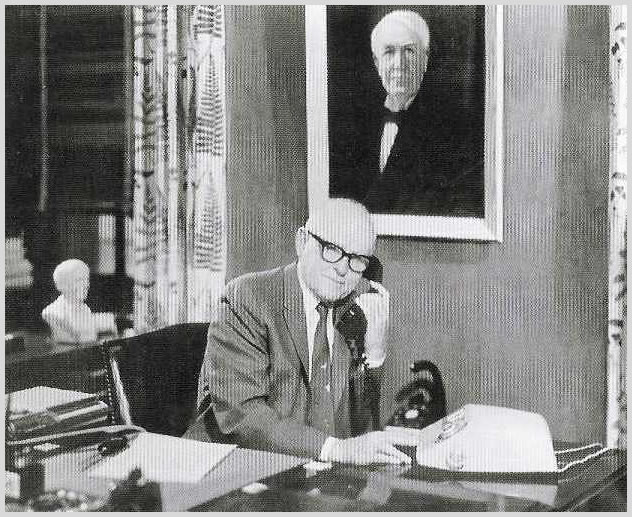
Max McGraw shown at his desk with the portrait of Thomas Edison that always adorned his office. A great admirer of the “Wizard of Menlo Park,” Max McGraw shared many characteristics and attributes with Edison.
With these two contracts, McGraw Electric Company was on its way and ever since the firm has known growth, expansion and shown that ever-so-vital ingredient of a successful enterprise, an operating profit. In 1902, McGraw Electric Company moved to new and larger quarters, securing the first floor and basement at 517 Fifth Street, Sioux City, at the rental of $40. Had he not secured new quarters when he did, McGraw Electric Company might have met with disaster. Shortly after moving to the new location, the drugstore building collapsed, trapping the owner, Mr. Ruff, in the basement for several hours.
Fate spared Max McGraw just as it had Thomas Edison who was dissuaded by a friend from accompanying two others who had shared Edison’s ambition to go off and earn their fortunes in the fabulous lands of Latin America. Edison learned Spanish and was as far as New Orleans when his friend convinced him not to continue. His companions went on, however, and on the boat to Vera Cruz contracted and quickly died of yellow fever. The winds of fortune blew favorably for Max McGraw as they had for Edison or we might have lost in their youth two men who were destined to be numbered among this nation’s most productive citizens.
Throughout his early years, Max McGraw was always too busy to pay much attention to girls. However, with the completion of the opera installation, Frances Schaaf, a lovely young Sioux City girl, frequently shared the free tickets. No one in Sioux City was the least bit surprised when Miss Schaaf became Mrs. McGraw on August 16, 1904. His boyhood friend, Ross Brown, “kept store” for him while he and his bride were on their honeymoon. Two daughters and a son grew from the devoted and close companionship that spanned nearly half a century to the death of Mrs. McGraw in 1952.
McGraw Organizes Two New Companies
Early in his business career, Max McGraw became a great admirer of an Omaha businessman, Joseph R. Lehmer, who had built a big railroad, mill supply and electrical business with little capital. Fired with ambition and determined to duplicate the success of his ideal, Max McGraw decided to organize a second company in 1903 to do business on a larger scale. He discussed his ideas with his father, his boyhood chum, Ross Brown, and three successful local business men. All agreed to become shareholders in the new company, Interstate Supply Company. Young McGraw patterned this business closely on that of the successful Omahan, Joseph Lehmer.
The business grew by leaps and bounds, far beyong its founder’s fondest hopes. In 1907, Max McGraw formed a third independent organization, Interstate Electric Manufacturing Company, to manufacture magnetos, telephones and power switchboards. This firm was also successful. Three years later he consolidated his second and third companies to form Interstate Supply and Manufacturing Company.
In February 1912, Joseph R. Lehmer, who had been such an inspiration to Max McGraw, died. Not wishing to continue the extensive business, Mr. Lehmer’s heirs sold out all interests in the mill supply and electrical equipment manufacture to Max McGraw. In 1912, Max McGraw merged the Lehmer Company and Interstate Supply and Manufacturing into the original McGraw Electric Company, with himself as president.
Thus at 31 years of age, 14 years after- organizing his first company, Max McGraw had built a business with annual sales of over $2 million.
In July 1922, the McGraw Electric Company bought Central Telephone and Electric Company in St. Louis, Missouri. By 1925, the scope of operations had extended into Iowa, part of Kansas, Nebraska, Oklahoma, Missouri, Arkansas, Kentucky, Colorado, Wyoming, South Dakota and part of Minnesota.
Meanwhile, almost without realizing it, Max McGraw had gotten into the electric utility business. McGraw Electric Company had bought an electric light plant in South Dakota and began acquiring some electric and telephone properties in Iowa, Nebraska, South Dakota and Minnesota. These utility properties remained part of the McGraw Electric Company until 1927, when they were consolidated under a separate corporation, the nucleus of Centel Corporation.
He Foresees Domestic Pop-Up Toaster
Max McGraw has at times been credited with inventing the automatic toaster. Actually, the first automatic toaster was designed by Charles Strite during the First World War. However, Max McGraw’s vision and know-how made the manufacture of the household toaster practical and he was responsible for its introduction on a national scale. In the 1920’s, Mr. McGraw heard of the Waters-Genter Company of Minneapolis, manufacturer of a commercial pop-up toaster which they called Toastmaster.
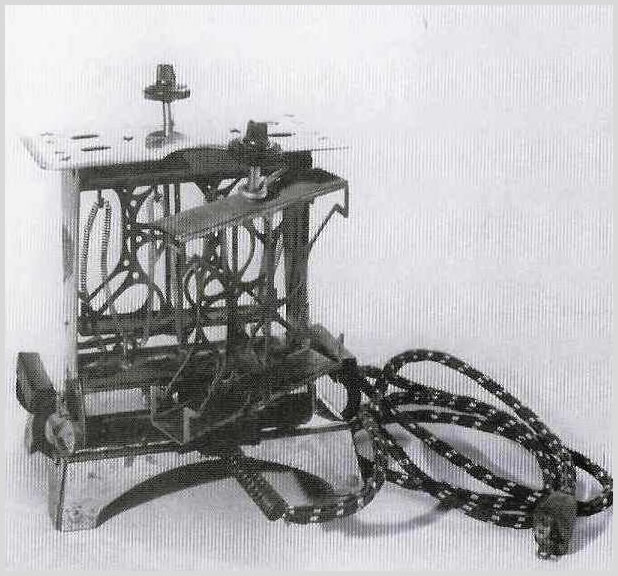
Early model home electric toaster. Photograph provided courtesy of National Museum of American History Smithsonian Institution.
The Waters-Genter Company had been formed in 1912 to provide more capital for the expansion of production facilities of the four-slice toaster patented by Charles Strite. The manufacturers felt that the market for their toasters, which were confined to restaurant use, was saturated. Even though production in 1921 was only one commercial toaster a day, there were seven shop employees who agreed that an automatic toaster for the home would be novel and useful. They worked evenings and weekends on the design and construction of a working model, but it took months to produce ten one-slice household toasters. They found the cost of producing them prohibitive for marketing and gave up the idea as impractical.
Their feeling was evidently shared by General Electric, Westinghouse and others who turned down the opportunity to buy the company. In what was probably the classic understatement of the year, Max McGraw said, “We didn’t think so.” He alone saw the potential of developing an automatic toaster on every breakfast table in America as a replacement for what had become almost a breakfast ritual…scraping the charcoal areas from burned toast with a dull knife.
Pop-Up Toastmaster Readied for Home Use
Murray Ireland joined the organization on March 1, 1925, as factory superintendent and designed the first domestic toaster that was marketed, Model 1A1. Until 1926, the toaster was presented only to the commercial market.
It was in 1926 that Mr. McGraw purchased the Waters-Genter Company, thus supplying not only the necessary capital but also providing years of valuable experience and proven ability in the electrical appliance field. He retained the same staff; the McGraw Electric Company was incorporated; and the job of producing and selling an automatic toaster to the consumer public was begun.
In the summer of 1927 domestic toaster national advertising was begun telling the whole country about the “Toastmaster” household toaster. The sales force in the early days consisted of ladies who carried a loaf of bread under one arm and a toaster under the other.
Mr. Waters and Mr. Genter sold their interests in the company to Mr. McGraw in 1927, and in 1929 this business was made a part of the McGraw Electric Company.
Had Max McGraw done nothing more than bring the Toastmaster toaster to the homes of America and the world, his name would be prominent in the world of success.
Merger Forms McGraw-Edison Company
Actually, Max McGraw was really just beginning to build. Throughout the years, guided by his vision and know-how, both Centel’s predecessor companies and McGraw Electric Company continued to grow rapidly via the acquisition route. Many of the acquisitions through the years may seem to have “just happened.” Actually, Max McGraw’s wide acquaintanceship throughout the utility and manufacturing industry and the fact that he traveled extensively to see and hear what was going on, often resulted in his hearing of companies that were susceptible to purchase. Negotiations usually began from that point.
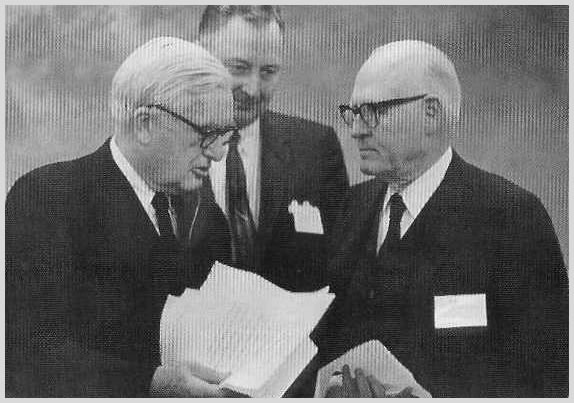
Charles Edison, Thomas Edison’s son, former secretary of the Navy and Governor of New Jersey, shown with Max during the discussion that led to the formation of McGraw-Edison Company through the merger of McGraw Electric Company and Thomas A. Edison Industries, Inc. Paul J. Christiansen, president of Edison Industries is the third individual in the photograph.
Since boyhood, Max McGraw had always been an admirer of the great inventor, Thomas Alva Edison. “No matter what Mr. Edison did,” he commented on one occasion, “he did it right. Sooner or later, everybody came around to the Edison way of doing things.”
In 1956, Max McGraw wrote to Charles Edison, son of Thomas Alva Edison, former Governor of New Jersey and Secretary of the Navy, proposing that they meet to discuss the possibility of merging McGraw Electric Company and Thomas A. Edison, Incorporated. The proposal met with agreement and shortly thereafter the two met at the Broadmoor Hotel, Colorado Springs, Colorado. An agreement was reached in just a few days, when Max McGraw named the dollar figure which Charles Edison thought appropriate.
With the approval of shareholders, the consolidation became effective in January, 1957. On consummation of the merger, McGraw Electric Company became McGraw-Edison Company, acquiring the famous Edison Laboratories in West Orange, New Jersey, several manufacturing divisions and additional subsidiaries.
McGraw’s Philosophy: Find the Right Man, Then Leave Him Alone

Max at his desk.
Charles Edison continued his career as chairman of the board of directors of the combined operation until his retirement in 1960. This was in keeping with basic McGraw philosophy which had been so evident throughout his company’s many acquisitions. Max McGraw continued his brilliant career as chief operating executive. While the general trend in business during this period moved toward concentrating authority, the McGraw “leave-em-alone” philosophy was the established pattern of operation in the organizations he ran. The men who knew the business could run it. The men operating the companies continued to do so following acquisition…and with a minimum of interference from top management. To many questions involving an operating problem, his answer was, “That’s up to the divisions.” As he explained in an interview, “I pick my men, delegate to them, and it’s up to them.”
In Max McGraw’s opinion, “the subordinate should be given an opportunity to do the job in his own way with reasonable guidance to keep him in line with general policy.” This is not to say that Max McGraw didn’t know the answer nor that he didn’t know what was going on, for throughout his career he was a man who got around to every nook and corner of his far-flung operations. In his office, he spent long hours at his desk…planning, organizing, innovating, counseling, keeping himself fully informed about his diversified enterprises. Generally, his schedule would leave men half his age gasping for breath.
He Was Active to the Very End
Busy as he was, Max McGraw always worked unhurriedly…managing so that he had time for his many interests.
Although he named Al Bersted as President of McGraw-Edison Company in 1959 andgave him responsibility of running the company day-to-day, Max McGraw remained as chairman of the executive committee.
To the questionnaire asking when he planned to retire, Mr. McGraw answered, “The day I start to slip.” He never slipped. He never retired. Right up to the time he left on the hunting trip…his last hunting trip…he was too busy to think about doing either.
Just as Max McGraw once said of the great inventor Thomas Alva Edison whom he so admired , “No matter what Thomas Edison did, he did it right,” so too could that statement be made of Max McGraw. Max McGraw was a genius of business just as Thomas Edison was a genius of invention and development.
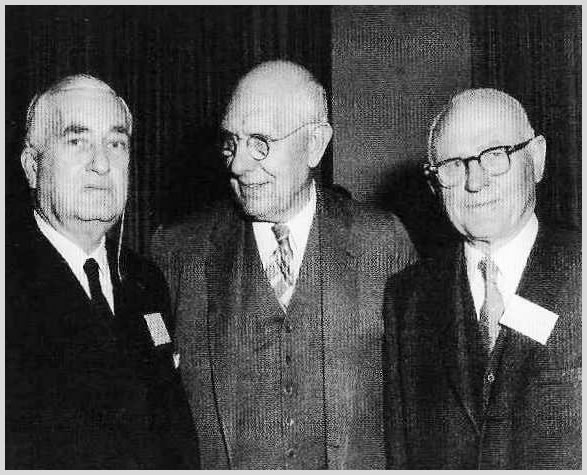
Govenor Charles Edison and Max McGraw stand along side another giant of industry, their close friend Charles Franklin “Boss” Kettering. Ket, the man awarded more patents than anyone who ever lived, excluding Thomas Edison, was the founding president of the Thomas Alva Edison Foundation, an organization in which all three played active and key roles.
